- Arms
- Arms < half ML; arms II=III>I=II.
- Arm suckers biserially arranged and relatively small (largest suckers midarm); except for hectocotylus, each arm usually with 75-78 suckers (range 66-87).
- Arm suckers with 5,7 or 9 teeth on distal 2/3 of sucker rings, depending on sucker size; central tooth generally slightly larger than lateral teeth.
- Tentacles
- Proximal region of club with suckers in two series with each sucker attached to base of trabecula as on arms, no locking apparatus is present; middle (manus) region suckers in tetraserial arrangement with small lateral suckers attached to trabeculae and large medial suckers attached directly to club; carpal area suckers similar in dentition to arms suckers.
- Manus area of club with suckers in four series; large, medial club suckers with 15 relatively large, sharp teeth alternating with 15 smaller blunt teeth around entire ring; distal teeth, especially blunt ones, distinctly larger; distal medial tooth larger than others but degree of enlargement variable.
- Dactylus area of club with suckers in four series; trabeculae reduced, low protective membrane better developed on ventral margin; sucker dentition similar to that of manus-area suckers.
- Club generally with about 155 suckers total. photo
- Proximal region of club with suckers in two series with each sucker attached to base of trabecula as on arms, no locking apparatus is present; middle (manus) region suckers in tetraserial arrangement with small lateral suckers attached to trabeculae and large medial suckers attached directly to club; carpal area suckers similar in dentition to arms suckers.
- Head
- Beaks
- Lower beak with shoulder tooth, transparent strip along jaw-edge extension, low wing fold, broad hood with notch, rostral edge about equal to hood length; lateral wall without fold, rostrum with pronounced hook. Color blacker than general in ommastrephids.
- Calculated regression (r2 = 0.756; n = 67) of lower rostral length (r) in mm against wet weight in grams (w):
ln w = 2.405 = 2.012 ln r
- Calculated regression (r2 = 0.736; n = 67) of lower rostral length (r) in mm against mantle length in mm (l):
l = 102.0 + 29.47 r
- Lower beak with shoulder tooth, transparent strip along jaw-edge extension, low wing fold, broad hood with notch, rostral edge about equal to hood length; lateral wall without fold, rostrum with pronounced hook. Color blacker than general in ommastrephids.
- Foveola, in funnel groove, with 7 longitudinal folds; side pockets absent.
- Statoliths
- Beaks
- Funnel
- Funnel organ
 Click on an image to view larger version & data in a new window
Click on an image to view larger version & data in a new window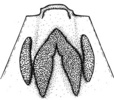
Figure. Ventral view of the funnel cut open of M. hyadesi showing the shape of the funnel organ. Drawing from Rodhouse and Yeatman (1990).
- Funnel/mantle locking apparatus typical for family but with mantle component showing similarity to that of Todarodes pacificus in cartilage at the anterior tip (see Comparisons of the funnel-locking appartus).
- Funnel organ
- Fins
- Fin length about 40% of ML.
- Posterior fin angle 47-55°.
- Photophores
- Photophores absent.
- Photophores absent.
- Pigmentation
- In live specimens: Dorsal surface of mantle with very dark purple coloration; lateral mantle red/brown; ventral mantle silver/white.
- In live specimens: Dorsal surface of mantle with very dark purple coloration; lateral mantle red/brown; ventral mantle silver/white.
- Gladius
- Gladius with typical ommastrephid shape, reinforced with one central and two lateral ribs; vane 20% of total length.
- Gladius with typical ommastrephid shape, reinforced with one central and two lateral ribs; vane 20% of total length.
- Viscera
- Spermatophore
- Spermatophore
- Measurements and counts
Character Range mean +/-sd Range mean +/-sd Type specimen Males Females Mantle width index 19.0-29.7 23.4 2.1 19.9-26.8 22.8 1.6 19.0 Head length index 12.9-17.4 15.8 1.0 12.6-17.6 15.7 1.0 19.0 Head width index 12.0-18.4 15.5 1.4 13.2-17.7 15.5 1.2 Fin length index 38.2-45.6 41.6 1.9 38.4-45.5 42.0 1.8 43.0 Fin width index 54.3-66.5 60.0 2.8 55.5-64.3 59.4 2.3 55.5 Arm I length index 29.5-43.8 37.8 3.3 29.9-43.2 36.9 2.8 37.0 Arm II length index 34.6-48.8 41.5 3.0 35.2-45.7 40.4 2.7 41.0 Arm III length index 35.5-49.2 42.0 3.2 35.7-46.1 40.9 2.6 43.0 Arm IV length index 27.7-36.5 32.5 2.3 30.1-40.8 35.2 2.6 37.0 Hecto length index 6.6-14.9 10.5 2.3 Tentacle length index 49.3-66.9 58.6 4.7 44.9-70.2 59.8 5.2 Club length index 38.2-55.6 48.4 4.1 37.3-57.0 48.6 4.2 50.0 Gladius length index 91.9-100.0 95.1 1.6 91.9-89.9 95.5 1.6 Gladius width index 2.8-4.7 3.3 0.4 2.6-3.7 3.1 0.2 Rhachis length index 74.5-85.5 78.5 2.6 72.6-81.7 77.4 2.0 Rhachis width index 3.8-4.7 4.3 0.2 3.9-5.0 4.3 0.3
Comments
The above characteristics are from Rodhouse and Yeatman (1990).

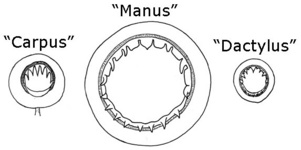
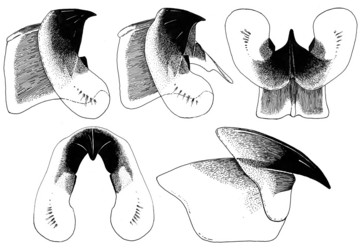
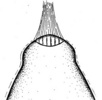
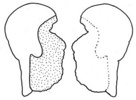
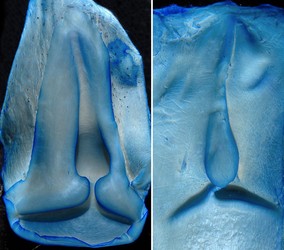
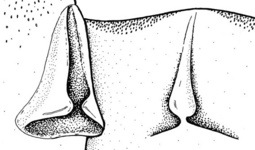






 Go to quick links
Go to quick search
Go to navigation for this section of the ToL site
Go to detailed links for the ToL site
Go to quick links
Go to quick search
Go to navigation for this section of the ToL site
Go to detailed links for the ToL site